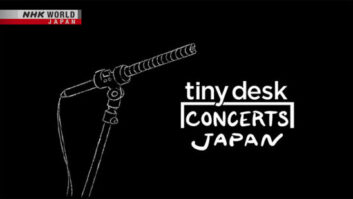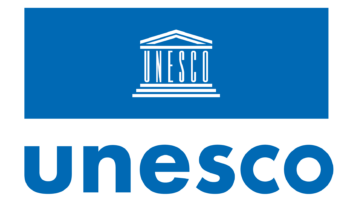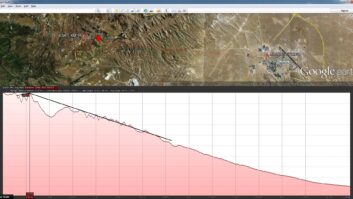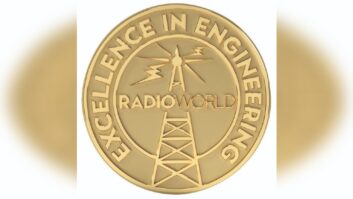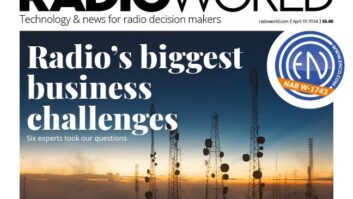The world has become IT-centric. While this is beneficial in many ways, the trend changes the options available to broadcasters to deliver content to their transmitters.

Credit: iStockphoto/marrio31
Veteran broadcast engineer and consultant Rob Meuser took a comprehensive look at options now available for studio-transmitter links and solutions to utilize them effectively in a presentation at the spring NAB Broadcast Engineering and IT Conference.
Meuser, CPBE, CBNT, is the CTO of Engineaux Inc. and a lifelong broadcast engineer who has designed and built radio and TV facilities over 40 years. He is former senior technical engineer for broadcast operations at CBS Television Network and former chief engineer of WHTZ(FM) “Z100” in New York.
He opened by taking a brief stroll down memory lane, describing the many STL systems broadcasters have used over the years. In the beginning, there were no STLs as stations were forced to co-locate at their transmitter sites. As stations built higher-power facilities some distance from downtown studios, the first STLs were wire lines leased from the regional Bell telephone companies. Equalizers were used to compensate for high-frequency losses.
TELCO LINES RULED
In order to minimize the number of copper pairs in trunks serving multiple customers, the phone companies began multiplexing lines using SSB and other techniques. Up to 60 discrete channels could be transmitted on a single pair. Telco copper pairs were the dominant STL for the first 40 years of broadcasting.
In 1950, RCA developed the basic T1 transport using a 1.51316 MHz carrier that could deliver 24 B channels at 64 kbps. T1s are still used by many broadcasters on platforms like GatesAir Intraplex and several Worldcast offerings. Stereo broadcast audio channels, either uncompressed or bit rate reduced in various codec qualities, can be delivered, along with LAN extension, OPX phones and remote control data to a transmitter site on one or more T1 circuits.
WIRELESS STL
When FCC rules established the wireless BAS STL bands in Part 74, many broadcasters dispensed with recurring monthly telco charges to become independent using their own STL radio links. The 950 MHz band became popular for radio and is still in widespread use. However, 950 is bandwidth-limited compared to the higher STL frequency bands in use up to 23 GHz. Even with digital encoding, only two stereo program channels plus low bit rate data for remote control and a few lower-quality SCA services is about all the 950 channels can handle.
IP AND STL
With the advent of private IP networks, LAN extension and the internet, internet protocol is rapidly becoming the dominant player in the STL space. IP has proven to be a much more efficient use of the telco infrastructure than even bit rate reduced digital audio. The number of IP-based choices available for STL services are many and move well beyond telco offerings. Meuser predicts that even “T1’s may end up in the IP cloud.”
GatesAir and Worldcast are each offering IP-based STL systems in both wired and wireless STL links. They include modern codecs built to demanding telco specs. A longstanding downside with the telco infrastructure however is vulnerability to “backhoe fades.” These systems both add important redundancy to their STL IP links by using dual ethernet ports that connect to different and separate service paths. Proprietary bit splicing technology makes this possible.
PUBLIC INTERNET STL
With larger data pipes, both wired and wireless now commonly available including fiber, IP is well suited for carrying multiple channel STL payloads via a number of platform choices. The open internet is a cheap and readily available network for STLs, using devices like Barix boxes, but as most everyone realizes, it is not secure. Even when such setups are tuned for optimal protection and performance, jitter and dropouts due to traffic congestion can occasionally impair and disrupt the service, especially if the path routes through different ISPs.
PRIVATE IP STL
Meuser advised that extending an office LAN or isolated VLAN from studio to transmitter site for STL is the most secure method to convey any IP-based STL system. Internal 10 dot subnets commonly are used. Exposing connections to public accessible IPs is much less secure, and if they must be used, appropriate firewall protection must be in place.
Metro E or MPLS (Multi-Protocol Label Switching) IP services provide high-bandwidth throughput, and are very reliable and well suited for point to multipoint WAN distribution, but they require fiber connections at both ends. They achieve significantly increased speed performance and reliability by labeling data packets to be routed via different network paths on a pre-determined basis to avoid slow-downs and congestion. MPLS services are offered by most of the traditional common carriers like Sprint and Century Link but also by smaller lesser-known companies as well.
LICENSED VS. UNLICENSED
Meuser discussed advantages and disadvantages of the various wireless STL bands in use by broadcasters. As radio stations find the need for larger bandwidth pipes, they are moving away from 950 MHz to the higher BAS licensed 18 GHz band. Other bands like the unlicensed ISM 2.4 and 5.8 GHz bands have become quite popular, especially with uBiquity’s cost-efficient Rocket platforms.
Meuser cautioned about using the unlicensed bands in more-populated areas for primary broadcast STLs, since they are much more vulnerable to interference. Other users and services have proliferated dramatically in the ISM bands, making them virtually unusable for broadcast STL in many areas. The better option is obtaining coordinated and licensed service in the common carrier FCC part 101 bands. The 6, 11 and 23 GHz bands became available to broadcasters in recent years.
INTERFERENCE CONCERNS
While the licensed microwave STL services rarely experience interference, they do have their negatives.
Line-of-sight paths are almost always required, which necessitates mounting dishes on towers and high-rise rooftops. Ducting and paths over water impacted by weather-related effects can disrupt their reliability. But such events can be mitigated by using properly designed RF links with plenty of fade margin headroom.
All of the wireless transmission manufacturers providing equipment for the high-band microwave STL services offer selectable modulation schemes to balance out the quality, spectral efficiency, reliability and overall system performance requirements. By adjusting QAM rates and channel power, optimizing the data throughput and quality while reducing susceptibility to dropouts and interference can be achieved over a given path.
THE NINES RULE
When spec’ing out any STL system for reliability, the number of nines is the commonly used measuring stick. Meuser advised that 99.9 percent or “three nines” of reliability gives up a cumulative total of about eight hours of downtime per year, while 99.99 percent reliability or four nines gives up one minute 19 seconds; five nines yields 26 seconds of downtime and six nines (99.9999 percent) provides only three seconds of downtime per year.
Typically the more nines your service requires, the higher the cost.
Tom McGinley is Radio World technical adviser.







